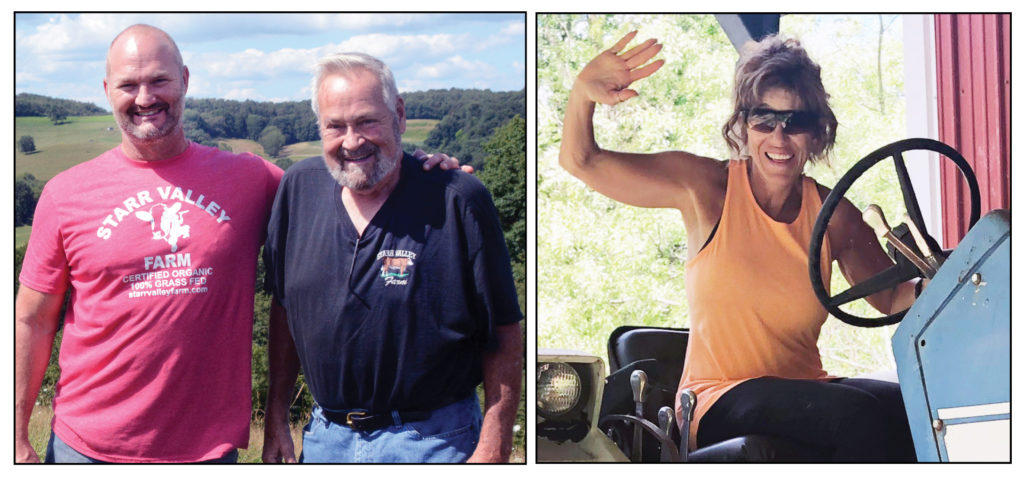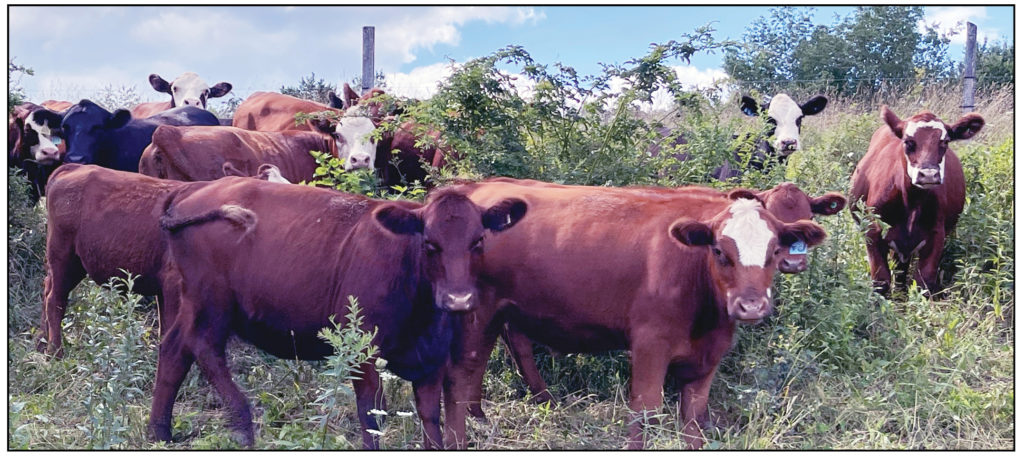The John Starr Family – Starr Valley Farm
When John and Margi Starr bought their first farm – 125 acres of land in Allegheny Township – the soil had been depleted of nutrients before going fallow for decades. The fields had become young forests of crab apples and brush. The property was in such bad condition that John’s uncle, a successful local turkey farmer, said the only thing that could be raised there was a disturbance.
More than 1,500 truckloads of horse manure and two decades of good conservation management later, Starr Valley Farm produces some of the most sought-after grass-fed beef in the Greater Pittsburgh area.

It has taken the Starrs years of work and investment to get to this point, along with a deep interest in conservation and the support of the whole family, including their five grown children, Tom, Danny, Jean, Sammy, and Jessica, who maintain more than nine miles of fence line, make hay and spread manure. John’s father, Dick, who himself grew up on a dairy farm and owns 103 acres nearby, also helps out.
At Starr Valley Farm, the family has installed a number of conservation practices over the years to help keep the animals healthy and the farm sustainable.

The most important, according to John, is their regular investment in the soil, which grows organic grass that is healthy and strong and able to outcompete the rival weeds.
The Starrs have divided their acres of organic grass pasture with a combination of high tensile and temporary ribbon fence into 30 paddocks for rotational grazing. They move two separate herds of feeders and breeders through these paddocks often, using science-based guidance from NRCS and John’s own intuitive knowledge of the animals and the type and height of grasses the farm produces. “Rotational grazing is as much art as it is science,” John said, “but generally it takes three full months to go through the first rotation, and each paddock gets 13 weeks to recover.”
The Starrs currently stockpile grass so that the herds can continue to feed on it in the winter. They are training the cattle to learn to paw down through the snow and eat the grass that is still in the paddock in the winter, with the goal of having enough there for the cattle to graze until Valentine’s Day. Not only is this more nutritious for the animals, but it is good for the farm’s sustainability because it reduces the time and labor needed to make the 250,000 pounds of hay historically needed to feed the herds through the winter.
The Starrs tapped built wells throughout the property, making spring developments that supply eight water troughs with continuous, quality drinking water for the animals. One of these spring developments is so reliable that it provides one gallon of water a minute even in the driest season.
The Starrs also installed two stream crossings and thousands of feet of streambank fencing, both designed keep the animals out of the streams so that water stays clean.
Around the barn they created a heavy use area and added several animal walkways into the pasture so that the concentrated weight of the animals in these places will not create excessive soil erosion.
Conservation also was an important consideration to the Starrs when they designed and built their home on the property. The house includes many of the same energy-saving and conservation features as the District’s barn, including structural insulated panels (waste wood with a non-CFC-producing foam in between), geothermal heating, heated floors, and inside wooden finishes made from culled timber (“crooked cherry”) harvested from their own property.
The Starrs have a Conservation Plan, a Prescribed Grazing Plan, and a Manure Management Plan for their farm. John served on the board of Penn’s Corner Resource Conservation and Development Council for more than a decade.

